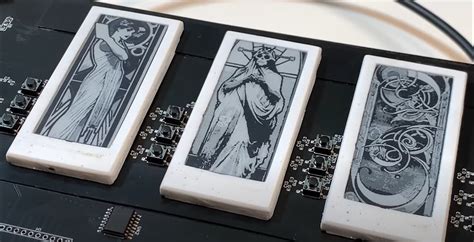The world of gaming is seeing a breathtaking transformation with the advent of e-ink trading cards. This breakthrough is effectively merging the timeless charm of traditional trading cards with modern technological advancements. These pioneering digital cards, unlike conventional ones, can display dynamic images and store data, thereby offering a fresh and interactive experience for players. Such technology turns what was once static into mutable and engaging gaming artifacts. But what makes this innovation more intriguing is its potential to redefine how people play and interact with games in the future.
The concept behind e-ink trading cards is fascinating. Imagine each card as a small digital slate that can alter its display based on its use and the game’s progression. This flexibility was cleverly highlighted by one commentator’s whimsical vision of wielding a deck of smartphones, each showing a card that could be reshuffled with a mere touch of a button. The tangible advantage here is not just the cool factor but the potential for environmental impact. Traditional cards, with their heavy reliance on plastic and paper, might become obsolete, reducing waste substantially.
However, integrating e-ink technology into the gaming sphere is not without its critics. Concerns have been raised about the longevity and environmental impact of these tech-laden cards. One respondent questioned the viability of such electronic cards, arguing they might quickly become e-waste. Unlike paper cards which decompose, digital cards could contribute to the growing problem of electronic waste. To address this, developers need to ensure these cards are designed for durability and sustainability, maybe even incorporating recyclable materials or offering programs for repurposing old cards.
But it’s not all skepticism. A significant allure of e-ink trading cards lies in their potential for lasting legacies. Unlike static cards, these digital counterparts can store and evolve with each game, making every card unique and valuable over time. For instance, a card that has been used in numerous victorious battles could carry its history visibly, providing a unique sense of attachment and prestige for the owner. This durability and evolving history can transform the way players perceive and value their cards, much like cherished collectibles or heirlooms.
The social aspect of gaming could also benefit from this technology. In traditional trading card games, physical cards are exchanged to build and enhance decks. With e-ink cards, the trading and sharing process could become even more dynamic. Integrating features like Bluetooth or Wi-Fi allows players to update, trade, or share their cards digitally, broadening the scope of interaction and community building within the gaming world. This interconnectivity could lead to new game genres and collaborative experiences that were previously not possible.
Financially, the model for monetizing e-ink trading cards could shift the gaming landscape significantly. Commentators suggested implementing microtransactions where players could pay for specific enhancements or even exclusive cards. Imagine paying $5 to best a friend in a game or $20 to secure a night-long victory. While this might seem controversial, it is reflective of the existing trends in mobile and online gaming markets where in-app purchases have become a norm. Developers could tap into this model to sustain and grow their offerings continuously.
The application of blockchain technology could further enhance the value proposition of these cards. By leveraging blockchain, each card’s history and rarity could be authenticated and preserved, providing players assurance of its uniqueness and value. This could prevent counterfeiting, a considerable problem in traditional trading card games, and foster a healthier trading environment. However, the debate around blockchain’s environmental impact remains, and any use of it needs to be balanced against the ecological footprint it leaves.
Ultimately, the future of e-ink trading cards seems promising but hinges on thoughtful development and responsible manufacturing. From designing engaging games that fully utilize the technology to addressing environmental concerns, the success of e-ink cards lies in a holistic approach to innovation. If developers can balance the novelty of tech with practical sustainability, e-ink trading cards could not only revolutionize gaming but also establish a new standard for how interactive experiences are created and enjoyed. As this technology evolves, we may soon see a world where every game brings a unique story, a lasting impact, and a community of engaged, connected players.


Leave a Reply